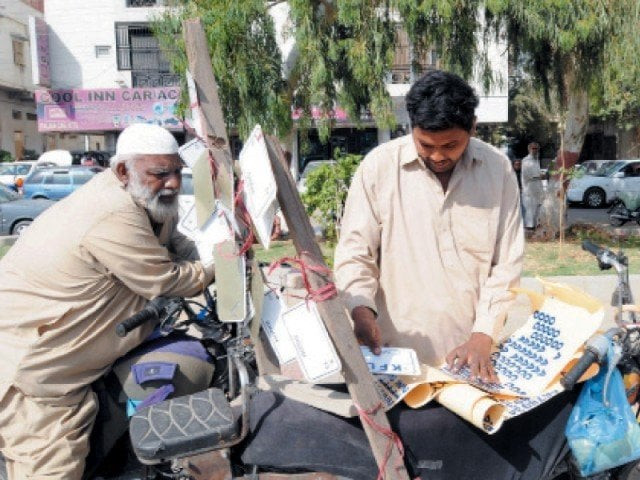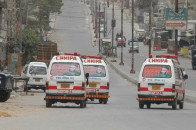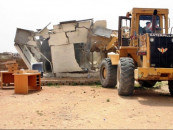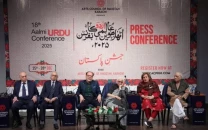A positive initiative: Excise department promises to step up to the plate
Licence plates boasting security features will be available from next year.

File photo of license plates. PHOTO: RASHID AJMERI/EXPRESS
To prevent tampering of the licence plates numbers of stolen vehicles and enhance security checks of vehicles, the Sindh Excise and Taxation Department is introducing 'secure' licence plates.
These secure plates will come with a multitude of inbuilt security features and will be digitally scanned through cameras at various toll plazas. The department is preparing to launch the new number plates by July or August of next year after awarding a contract to an international company for the manufacture of the plates.
The department is in contact with a few German companies, one of which will most probably get the contract to manufacture the plates, The Express Tribune has learnt.
The excise and taxation department secretary Abdul Majeed Pathan confirmed the reports and said that the project is in its final stages. "We have issued the tender and by the start of the next fiscal year, we will hopefully start issuing the new licence plates," he said, adding that secure plates are already available in other provinces. "The new number plates will have various security features." Pathan also said that the new plates will be fixed to the body of the vehicles and can therefore not be stolen.
According to the department's director-general, Muhammad Shoaib Ahmad Siddiqui, other security features include a separate 'laser-serial number' for each vehicle. The plates will be made from special quality aluminium, making it difficult to replace or manufacture locally and will also include a Sindh government logo, he added.
How the plates will be issued
In the first phase, the new plates will be issued only to newly registered cars, while motorcycles and rickshaws will be included in the second phase. The department has not issued standardised number plates to motorcycles that were registered before 2012 or to CNG rickshaws. Previously, the motorcyclists got their numbers plates from private sellers as per the directions of the Sindh police, which were to have a white plate with easily legible black writing. "By issuing plates to motorcycles and rickshaws, we will be able to get a record of these vehicles for the first time," said Siddiqui. In the third phase, the department will issue plates to all those who want to get their plates replaced.
Reaction to the initiative
The Pakistan Motor Dealers Association (PMDA) praised the initiative but advised the department to ensure that duplicate number plates are easily available. PMDA chairman H M Shehzad suggested that the department should stop continuously changing contractors because it affects the number plates. "The excise and taxation department should have contacted us and we could have advised them," he said.
Some car dealers feel that the department should first provide the currently used plates to the car owners who are still waiting for them. Sources in the excise and taxation department revealed that five serials of private number plates are currently short in supply, with a single serial containing 1,000 plates.
"A number of my customers are waiting for their plates to be issued by the department for over a month. Department officials say that their contractor passed away, which is why supply has been diminished," said Haroon Jadoon, who owns a showroom on the Khalid Bin Waleed Road. "It will be great if the department actually goes through with what they claim. The plates will solve the problem of fake licence plates."
However, Jadoon and other car dealers are worried about even longer delays as the new plates will be imported and will take more time to order than the locally manufactured plates.
History of standardised plates
This will be the third time that the department is changing the licence plates. Six-digit number-only standardised plates were first issued in 1977. In 1992, the department revised the plates and both alphabets and numerals were used in the new version. Initially the numbers had a single alphabet and four numerals. As the number of registered vehicles increased, the plates started to feature two alphabets and four numerals.
In 1996, the government started to issue plates with three numerals and three alphabets; the format that is still currently in use. Private cars have yellow number plates, commercial cars have black plates with white embossed writing, along with a green Sindh government logo. “We issue contracts to private companies to manufacture the plates every year and prepare them in advance, while the numbers are issued later to the vehicles that apply for registration,” said Siddiqui.
Published in The Express Tribune, June 9th, 2014.



















COMMENTS
Comments are moderated and generally will be posted if they are on-topic and not abusive.
For more information, please see our Comments FAQ